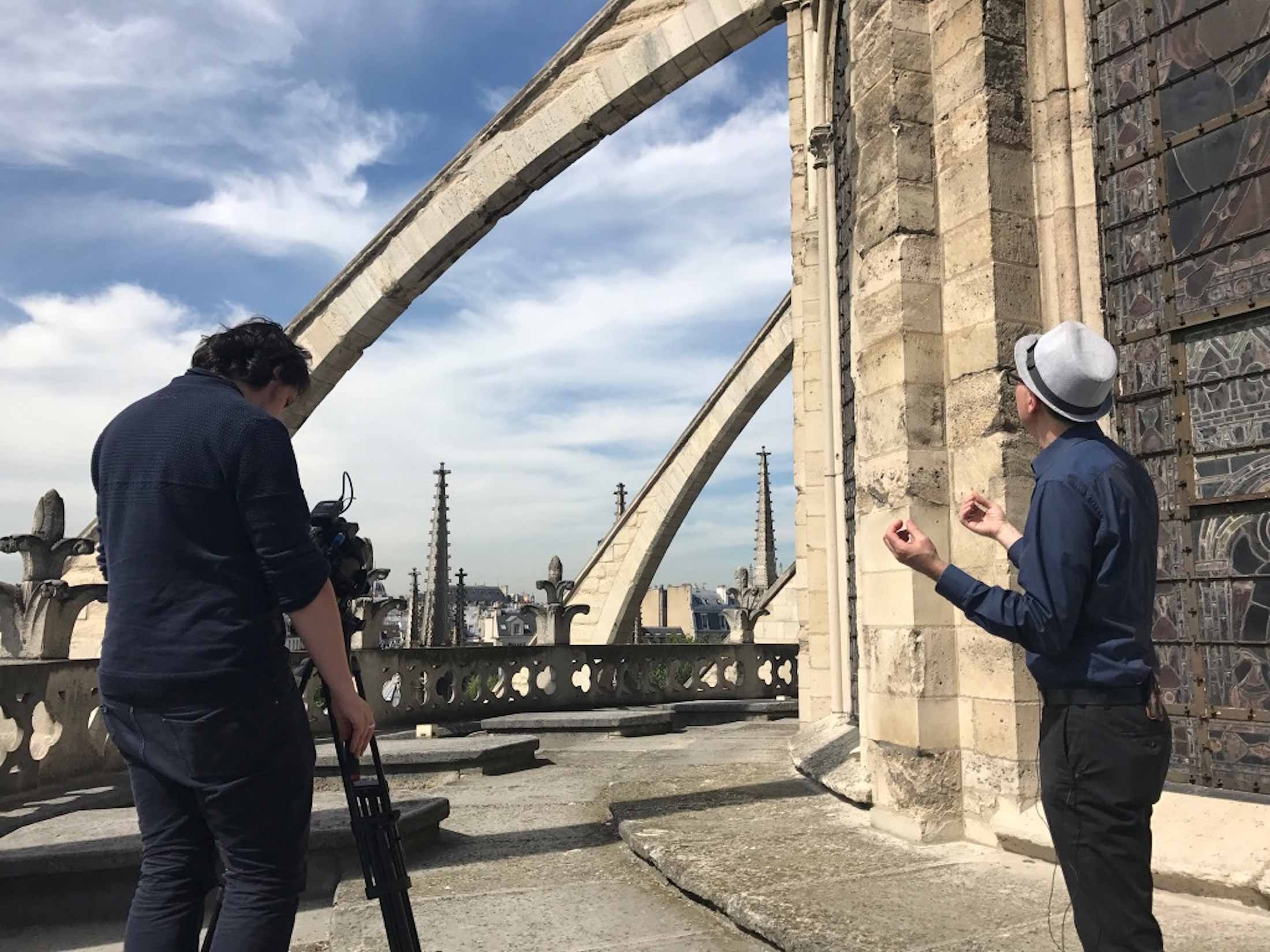Ford Scholars ProgramNew Imaging Techniques for Iconic Buildings
Ford Scholars ProgramNew Imaging Techniques for Iconic Buildings
The Cathedral of Notre-Dame in Paris is one of the most beautiful and most renowned structures in the world. But like most buildings that are more than 800 years old, it could use a little sprucing up. Its 300-foot spire has some alarming cracks in need of restoration; many of its gargoyles are missing or in advanced states of decay, and weakening stonework in the flying buttresses threatens the stability of the building.

Vassar Associate Prof. of Art Andrew Tallon has been helping French authorities raise awareness of the needed repairs by taking 360-degree spherical interactive images of the damaged portions of the cathedral for the website created by the Foundation Notre-Dame (Friends of Notre-Dame), an organization that he co-founded with Vassar Associate Vice President for Regional and International Programs John Mihaly. And this summer, Vassar student Karly Andreassen ’20 joined the effort, using sophisticated software to create a high-tech interactive video that takes prospective benefactors on a virtual tour of the cathedral.

Andreassen, who joined the project with Tallon under the auspices of Vassar’s Ford Scholars program, said she was honored to be playing a role in the restoration effort for the cathedral. “Our goal was to bring this building to life, to show the deterioration and to help raise the money for repairs,” she says. “My work this summer has definitely given me an appreciation for why people have a reverence for such buildings.”
In addition to working on the images for the Notre-Dame fundraising project, Andreassen updated and enhanced 360-degree photographs of other cathedrals and churches in France, Spain, Italy, Sweden, Switzerland, and England that Tallon has taken over the past decade.
Andreassen, who lives in Rocky Point, NC, says she learned to use some of the software required for “stitching” the 360-degree images together while she was a student at the North Carolina School of Science and Math in Durham, NC. But some of her work with 360-degree video software required some on-the-job learning this summer.” Stitching 360
Tallon says he was fortunate to have found a student with the skills to perform these tasks with the help of the Ford Scholars program. “What Karly accomplished this summer was far beyond what I thought would be possible for a student of her age, and I am delighted that she is willing to continue working with me during the coming school year,” he says.
Tallon says he had hoped to obtain some additional images and video of Notre-Dame this summer by drone. His initial attempt failed, however: the drone crashed in its maiden voyage around the exterior roof-level of the cathedral, misled by an errant GPS signal. It has since been repaired, and Tallon, Andreassen, and Amy Laughlin, Vassar’s academic computing consultant to the Art Department, have readied it for the next trip to France.

Tallon says he’s convinced that using a drone will help him continue a mission he has had since he began his teaching career. “ I’ve striven to bring the buildings I teach ever closer to the students, to help them see more, and with greater autonomy, than is possible with conventional ‘flat’ photographs. Through spherical video
Andreassen says the work she did with Tallon as a Ford Scholar “helped me think about how to do my own post-graduate research. I learned a lot this summer about learning.”